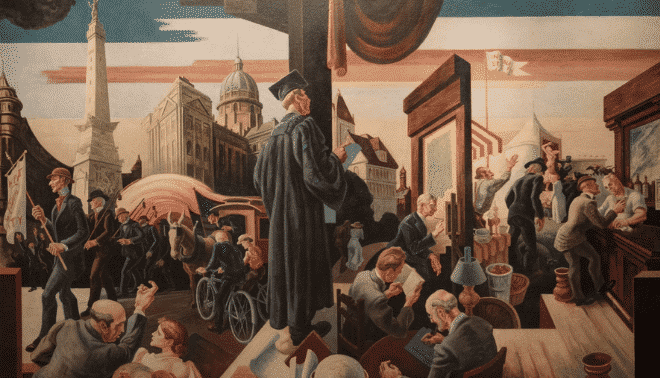Sign up for the Family Tree Newsletter! Plus, you’ll receive our 10 Essential Genealogy Research Forms PDF as a special thank you.
Get Your Free Genealogy Forms
"*" indicates required fields

Genealogists are increasingly interested in knowing not just their ancestors’ names and important dates, but also what they did every day, where they went and what they saw. What their lives were really like.
This will do (at least) two things for you:
First, it will improve your research by helping you form theories about your ancestors’ lives and figure out where to look for records. For example, learning about the history of German immigrants to your family’s American hometown might help you see that the overwhelming majority came from a particular part of Germany. Maybe that’s where your family came from, too.
Second, it help you understand your family’s story and put it together in a way that makes sense. Learning more about the time and place your ancestors lived will help you understand their life in context.
Here are a few ways you can step into the shoes of your ancestors and learn more about their everyday lives.
Go Beyond Basic Records
You can learn a lot about your ancestor through vital records. However, these records only document a single event like a birth or a marriage. While these are important events, the vast majority of your ancestors’ lives occurred in between these milestones, and therefore you’ll need to look to other records to learn more.
Finding your ancestors’ occupational or educational records can help you learn more about their individual personalities and experiences. Other record types to search include newspaper records, oral histories and local history records.
My great-great-grandfather’s 1923 estate inventory lists the contents of the family cigar store and home, helping me picture how the family lived.

The cigar business’ 1880 industrial census detailed the number of employees (three men, two women), their wages (.50 to $1 per day) and more.

Newspaper articles have also given me great information about my grandfather’s youth in an orphanage.
Visit Their Places
A bunch of years ago, I was able to interview author Ian Frazier about writing his family history book Family (MacMillan). He advised going to places important to your ancestors, trying to get as close as possible to they way it was during their lives. Go to family homesteads, neighborhoods, churches and schools. If the places no longer exist or you can’t get there, find similar places.
You also might consider planning a visit to a living history museum, or similar educational experiences that re-enact significant historical events that may have shaped your ancestors’ lives. If you’re able, you might also go abroad to visit the places your ancestors immigrated from.
Research Buildings
In addition to learning about your ancestor’s country and town, you can also discover more about them through learning about their actual home. Doing a house history can help you discover when it was built, when your family acquired it, who lived there before and after your family, what it looked like and how it changed over the years.
Peruse Local Histories and Guides
Guides to area history help you learn where your family would’ve gone to church and school, and what they saw each day. I have book with self-guided walking tours of my Cincinnati German families’ Over-the-Rhine neighborhood, with pictures of buildings and descriptions of their former functions. Local histories published when your ancestor was alive give you a first-person account of places and events.
There are several excellent, online resources for searching local histories like HathiTrust, HeritageQuest Online and Internet Archive. You can also look for them at local libraries or archives in the places where your ancestor lived.
Find Old Photos and Maps
Libraries, historical societies and online memory collections are full of historical photos of buildings, streets and neighborhoods. Try searching for a place in the Library of Congress online collections.
Maps also give you details on buildings and neighborhoods. This Sanborn map shows my Cincinnati ancestor’s home and cigar business on the corner. You can see it was on the front of the lot, two rooms on the first floor, three stories, with a three-story side porch and two outbuildings in the back.
Gather Relatives’ Memories
My grandma is gone now, but I treasure the times I sat with her and looked at old pictures on my phone. She’d reveal snippets of her life as a girl: How both of her grandmothers had player pianos (but favored different music). How she loved her one dress that wasn’t a hand-me-down. How the family dog would ride along on the running board of the car, then walk home when the family got where they were going.
We have several articles to help you plan family history interviews. Even if no relatives are around to ask, you might have home sources—letters, journals, photos—that share family memories of times gone by.
Related Reads
Last updated: June 2023











